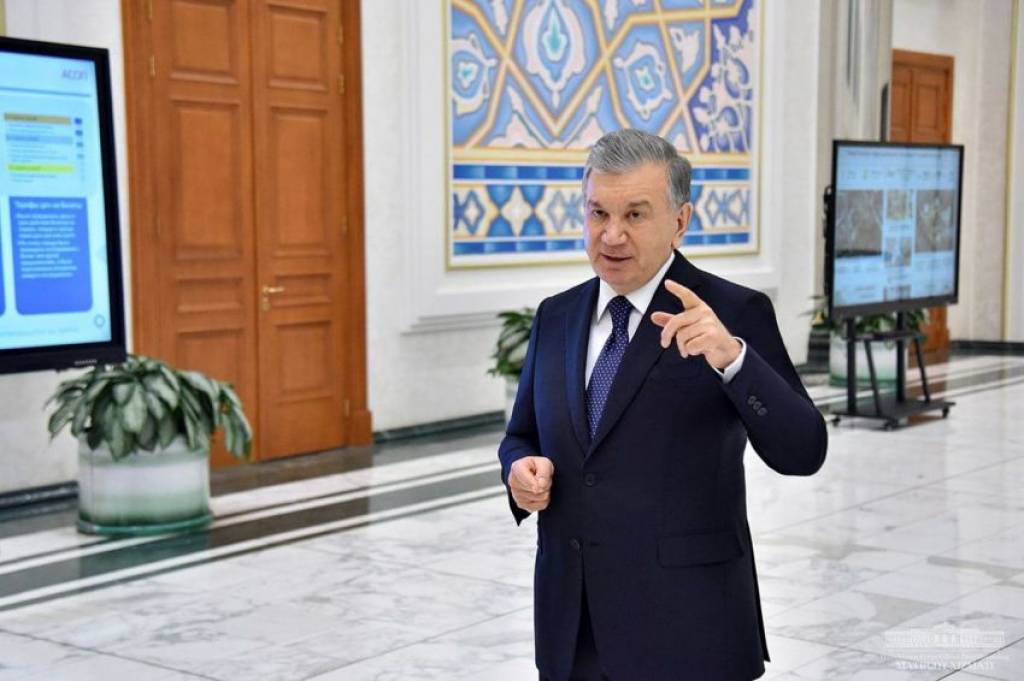
President Shavkat Mirziyoyev got acquainted with the concept of development of road transport infrastructure in Tashkent.
On November 23, President Shavkat Mirziyoyev got acquainted with the concept of development of road transport infrastructure in Tashkent.
The population and the number of vehicles in the capital is growing. Over the past 10 years, the number of cars in the city has doubled – from 250 thousand to 510 thousand.
The transport infrastructure is developing in accordance with this. New roads, bridges, and an overground metro are being built.
In particular, this year two stations of Yunusabad line of Tashkent Metro and the first stage of the aboveground ring metro were commissioned. 56 public transport routes were optimized. As a result, the transport service for 170 thousand people improved, and the travel time was reduced by an average of 15-20 minutes.
However, the traffic load on the streets of the capital remains high, and there are drawbacks in the management of traffic flows. The traffic load is growing every year.
In this regard, earlier, the Head of the state instructed to improve the system and infrastructure of public transport in Tashkent.
A comprehensive study of problems on the streets of the capital of Uzbekistan was carried out. The analysis of transport and passenger flows was carried out using a geographic information system.
The results of the study were presented at today’s presentation.
There are more than 500 large intersections in Tashkent, 200 of which have a low level of traffic capacity. Due to the lack of parking spaces, cars accumulate in the front lanes of the road, making it difficult to move. There are also no information signs for drivers. Few facilities for pedestrian and cyclist traffic.
A preliminary draft master plan for improving the road infrastructure and transport system of Tashkent was developed based on a comprehensive study.
Calculations show that the implementation of the project, which provides for the optimization of traffic at 24 major intersections, will reduce the number of stops by an average of 71 percent and the time of stops by 48 percent, reduce congestion by 64 percent, and reduce fuel consumption by 34 percent.

Special attention was paid to the issue of improving the functioning of public transport in Tashkent. The Head of the state noted that the population is absolutely not satisfied with passenger transportation services. For example, the interval between buses on 79 routes during peak hours reaches 30 minutes. As a result, passengers prefer other types of transport. Today, only 33 percent of passengers use urban public transport. In the capitals of developed countries, this figure is 60-70 percent.
In this regard, the task was set to improve the infrastructure, ensure the speed and convenience of public transport.
The President emphasized the need for introducing a new public transport management system, integrate all parts of public transport, in particular, metro, car parks and taxi service enterprises, based on information technologies.
For this, the management of the metro, as well as the functions of the customer and control of Toshshakhartranskhizmat JSC will be transferred to Tashkent city transport department. Funding will also be provided by the department, which will allocate funds to transport companies depending on the volume of work actually implemented and the distance traveled.
Responsible officials were instructed to streamline public transport in Tashkent based on a unified system, determine the amount of funding and differentiated tariffs.
It was instructed to allocate separate lanes for public transport on the most congested multi-lane roads, to install parking meters on the central streets. The importance of increasing the number of pedestrian and bicycle paths was noted.
The need was noted for a deep transformation of Toshshakhartranskhizmat JSC, improvement of the Transport University activity.
Special attention was paid to strengthening the material and technical base of the public transport system.
The task was set to revise the road transport system in other cities of the country, to transform the central streets, as well as to optimize the activities of public transport in Samarkand, to create convenience for the population and tourists based on the experience of Tashkent.



UzA








